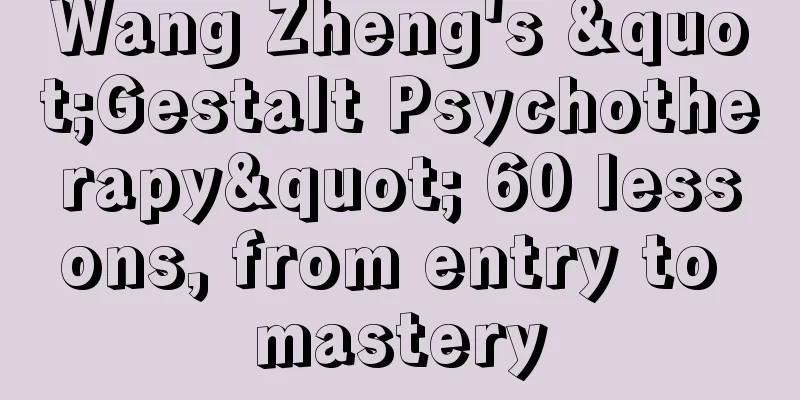Wang Zheng's "Gestalt Psychotherapy" 60 lessons, from entry to mastery

|
Training course video content introduction:
|
<<: Juhuasuan brand self-broadcasting method!
>>: Soul advertising, Soul advertising billing model
Recommend
Look once, it's weird, look again
There is a type of insect that lives on the earth...
Android L new changes at a glance: Well worth the upgrade!
Today, Google released a new generation of Android...
If someone shares these things with you, don't hesitate to report it!
One minute with the doctor, the postures are cons...
How to use the WeChat homestay mini program function for booking and checking in homestays?
Some time ago, many customers consulted the edito...
The third wave of artificial intelligence has arrived. Changhong Q5N builds the core hub of smart home
"If intelligence is not fully realized and h...
Seeing this WeChat update, I decided to praise the founder
[[411358]] I believe that friends who have checke...
Be careful! The high incidence age of this cancer is getting earlier! These 5 types of people are most likely to be "targeted"!
Everyone can get cancer. Does cancer attack indis...
Dry eyes...how did it become a terminal illness?
How many times have you watched "Kuaisan&quo...
The process of placing Toutiao information flow advertisements!
A good advertisement can bring unexpected marketi...
Chinese scientists discovered the world's first alpine meteorite crater! Why are there no traces of meteorites in the crater?
According to Xinhua News Agency and other media r...
[Video 42] Looking back on the road to mastery: interviews, cases, and supervision collection of the founders of psychotherapy schools
[Video 42] Looking back on the road to mastery: i...
Do you believe that hypnosis can work wonders?
Hypnotic suggestion can lead to unusually profoun...
Love Breast Day丨Beware of the "number one killer" of women's health! Do you really understand your breasts?
With the accelerated pace of life and the impact ...
What is quantum artificial intelligence? (Part 2)
Produced by: Science Popularization China Author:...
WeChat now has a small program called "MiXin" for information encryption
Tencent has now launched an information encryptio...









